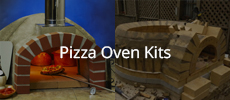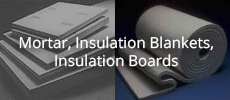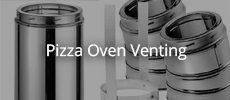X
-
So far so good. finished the outer arch today and put in the chimney anchor plate. It froze last night and it was covered but I got a crack in one joint but I was able to support it, dig it out, wet it, and re-mortar it. 12 hours later it looks and feels good. Right now I just have it tarped with a halogen light inside. Next week I'll try to tap the copper pipe through the base of the hearth (vermicrete) and start blowing a heat gun through it to dry out the floor a little faster. Temperatures are warming up a little. Could have just been a false early winter here. My plan is to start curing in a week after I install 3 inches of fiber blanket, maybe two weeks if the temperatures are cold.
-
If you wanted to achieve something along those lines, just work to keep the existing moisture in as you go. You can use plastic sheeting, wet towels, etc. Just bear in mind the curing process is one thing, drying fires are another. One does not work w/the other and there really is no such thing as a curing fire. A drying fire being used to drive out moisture in no way has anything to do w/curing. Actually, the exact opposite.Originally posted by paulkjrobbins View PostI used to work on government bridge projects and that's where I picked up on it being called curing compound. Subcontractors would spray it on slabs with backpack sprayers after finishing. It's really just a water sealer to prevent evaporation during the curing process. They don't worry about it so much in the wintertime because they use thermal blankets that keep it covered. Wish I had some of those right now!
Leave a comment:
-
Me either. I just don't see the use for it.Originally posted by Gulf View PostRussell,
It is basically like the clear latex acrylic bonding agent and fortifier that I used on/in my stucco and concrete ledges. The brand that I used could be used for for all three purposes at different dilutions. I'm not sure that I would use it for this situation, though.
Leave a comment:
-
I used to work on government bridge projects and that's where I picked up on it being called curing compound. Subcontractors would spray it on slabs with backpack sprayers after finishing. It's really just a water sealer to prevent evaporation during the curing process. They don't worry about it so much in the wintertime because they use thermal blankets that keep it covered. Wish I had some of those right now!
Leave a comment:
-
No snow down here, but we are right next to Utah lake and get the "lake effect". I have no idea what that means but other residents say it is why Provo gets a little less snow than other places around. It hasn't come down past the Y so far but Mt Timpanogus is covered down past big baldy . For those unfamiliar with BYU in Provo, UT. There is a big whitewashed Y on the side of the mountain that adjoins the city.
I cut everything out today, but didn't mortar it. Going to take off early from work tomorrow and put everything in and then tent it up with the halogen light to keep it from freezing. I need to get the insulation on so the brick can start to retain heat and not have water freeze in the mortar before I have a chance to dry it out. Wish me luck! Thanks for all your help.
Best, Paul
Leave a comment:
-
Snowing! We ain't expecting snow until maybe early February 2029 lol;. Still fighting skeeters down here. For brick over a freezing night we can usually get by with a tarp for a wind break. It got down to the mid twenties during my build. I used a tarp spaced away from the brick and just an incandescent light bulb. I'm not sure you can buy those anymore
Leave a comment:
-
I also used an acrylic bonding agent when I poured the glass infused concrete counters to my concrete hearth. I never heard it called a curing compound. It has been snowing here today so I suspect it is also snowing where paulkr is located.
Leave a comment:
-
Russell,
I would not apply it liberally to every surface, but painting on the grout joints after the initial set would keep the moisture in for curing but still allow for water to escape through the firebrick. I used it on my slab and hearth and anytime I pour a slab. It does weather off eventually and I wouldn't be surprised if it burned off during the first fires.
Leave a comment:
-
Russell,
It is basically like the clear latex acrylic bonding agent and fortifier that I used on/in my stucco and concrete ledges. The brand that I used could be used for for all three purposes at different dilutions. I'm not sure that I would use it for this situation, though.Last edited by Gulf; 10-14-2021, 03:18 PM.
Leave a comment:
-
Interesting, never recall seeing it used on any WFO builds. Just need to make sure it does not impede water vapor movement during the cuing cycles.
Leave a comment:
-
Curing compound is used on freshly poured concrete and sometimes grout. It seals the surface so moisture stays in for the curing process. I would apply to the joints so water doesn't exit too fast with a heater on it, but it can still get out through the brick.
Leave a comment:
-
My CF board got rained on once in late summer when I started my build and held water till I started curing fires the following April! I was able to drive it out over the course of several curing fires. I was surprised at how much water the board held as I kind of thought it would have dried out over the winter.
I've been working on my oven for a little while and have been debating starting a build thread, as I probably won't have much to add in terms of artistry or inventiveness over the excellent work already posted on this forum. That said, I thought I would share what I have done and hopefully continue to get
Leave a comment:
-
I was also thinking about tapping a 1/2" copper pipe through the base of my vermicrete layer I would put slits in the pipe with my angle grinder so it acts like a french drain. I would then put a heat gun blowing through it to start to dry out underneath without heating up the dome and outer arch before they are cured. Writing about it right now I am thinking I could also put a fan on the other side to draw the heat and moisture through. My vermicrete layer is 7" thick with 2" of CaSil Board on top so I am not worried about it affecting the structure or being a heat sink. I might do a few pipes through to speed up the drying out of the floor which is thoroughly saturated. I'm happy to report back if this works or not, but before I go and do something stupid, does anyone have any cautionary advice on this idea?
Leave a comment:
-
Got about four bricks high on the sides of my outer arch last night. I boxed in the arch with firebricks, put some FB on top that I am saving for my door with the halogen light inside and then a tarp over it. It won't be cooking inside but it should keep everything from freezing during the night. After I finish the outer arch (hopefully later today) I will get it wet again and then coat it with curing compound inside and out before insulating - wait a week with the halogen light inside - then start very slow curing.
Leave a comment:





Leave a comment: